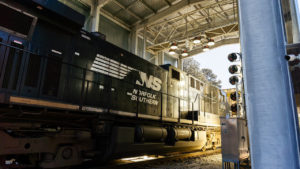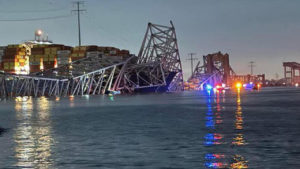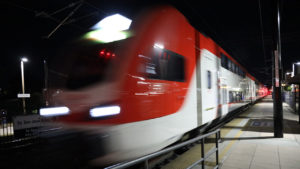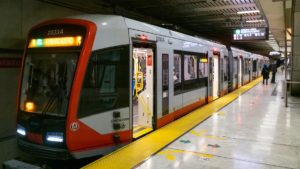Case Study of Autonomous Track Inspection Technology with MARTA and FTA to Gain Enhanced Safety and Asset Management
Written by Matthew Dick, P.E.,Chief of Strategy & Development, TTC Operated by ENSCO, Pueblo, Colo.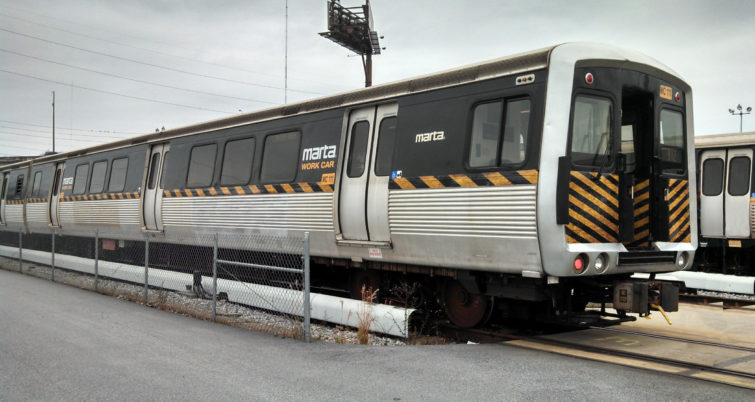
RT&S, JULY 2023 ISSUE – A team of researchers at TTC Operated by ENSCO worked with several partners to test autonomous track inspection technology.
Matthew Dick, P.E., Chief of Strategy & Development, ENSCO, Inc., Pueblo, CO
Jennifer Steets Zahaczewski, Engineer, ENSCO, Inc., Chambersburg PA
Abhay “A.J.” Joshi, Dir. Of Expansion Program Management, MARTA, Atlanta, GA
Raj Wagley, General Engineer, Federal Transit Administration (FTA), Washington, DC
The Federal Transit Administration (FTA), Metropolitan Atlanta Rapid Transit Authority (MARTA), and ENSCO Rail, Inc. (ENSCO) partnered to demonstrate how autonomous technologies can be successfully implemented in transit operations to help decrease manual walking during track inspection resulting in increased safety and state of good repair. ENSCO and MARTA developed a demonstration project with a phased approach to evaluate the capabilities of several autonomous technologies which comprise the Autonomous Track Inspection Systems (ATIS). The project consisted of installing various types of autonomous track inspection technologies on a MARTA owned vehicle and assessing the technology’s ability to aid in the partner’s goals to improve safety and efficiency.
Need for Technology
A unique challenge that transit agencies face is performing walking track inspections. Although most U.S. transit agencies are not governed by the Federal Railroad Administration (FRA), all have internal track inspection rules that have similar requirements to the FRA’s track inspection regulations, which include recurring manual inspections of the track. However, a major difference of transit railways (heavy rail or light rail) versus FRA regulated freight railroads and commuter passenger railways is that many transit railways have significantly higher train traffic with often only minutes between trains. Additionally, with the growth of major cities, this transit traffic is continuing to increase. This limits the time that transit tracks can be inspected to either between trains or during short, nighttime durations when a track is out-of-service. Inspecting track between trains in a transit railway has unique challenges in that multiple people are required to setup protection for the inspected zone and provide lookout protection. Additionally, trains often (but not always) operate at reduced speeds in the inspection zones causing traffic delays. For the track inspectors themselves, this is a challenging scenario where critical infrastructure must be inspected quickly, often times in the dark and with debris on the track.
With all these challenges, transit agencies suffer a significant safety risk of track inspector or worker fatalities. Tragically there have been multiple track inspector or worker fatalities when the inspectors and workers were struck by a train while performing visual inspections of the transit infrastructure. This issue has risen to the attention of the National Transportation Safety Board (NTSB) with its 2021-2023 Most Wanted List. The list includes only one railway related item entitled “Improve Rail Worker Safety”, which cites that FTA governed transit agencies have had a concerning number of railway worker fatalities caused by moving equipment.[1]
Automated track inspection technologies are already being used on passenger and freight railroads, monitoring track and vehicle behavior and using predictive maintenance to help railways plan for necessary repairs. The FTA is now interested in utilizing the available inspection technology to reduce the safety risks of inspectors on the track and achieve improved operational safety through technology enhanced track inspections.
Project Phases
The plan to execute the FTA-sponsored demonstration project required a three phased approach. Phase 1 began in September of 2017 when ENSCO began designing the ATIS technology to be installed on MARTA’s work car consist, which included two former revenue service passenger cars operating as a married pair capable of operating during revenue service as shown in Figure 1. This host vehicle was key to inspecting track during the peak revenue service conditions without having track inspectors at risk on the track. Additionally, it was important that inspection took place without negatively effecting revenue or transit service reliability for the MARTA system.
The specific technologies for Phase 1 of the program included an Autonomous Track Geometry System (ATGMS), an Autonomous Vehicle/Track Interaction (V/TI) Monitor, and a Thermal Imaging System (THIS). Each of these were chosen due to the technologies’ ability to inspect for high-risk conditions in the track and third rail infrastructure. All the systems, with a common location determination system, are synchronized with each other. When above ground, the system uses differentially corrected GNSS which is the enhanced version of GPS that provides greater accuracy. Also, the system uses previously installed track RFID tags used for station announcements, in the tunnels and underground sections. A RFID tag reader antenna installed on the vehicle is able to identify the tag location when it passes each RFID tag. Specialized logic is used to determine which track the train is on and what its chainage location is (equivalent of mileposts for transit agencies).
Track geometry continues to be one of the most difficult track conditions for track inspectors to visually identify. Autonomously measuring track geometry is critical because derailment risk conditions can occur quickly, such as rapidly deteriorating ballast or broken concrete grout pads causing wide gauge or track twist. The ATGMS used is the same design used on other railways in both manned and autonomous operations and is comprised of a measurement beam that includes lasers, cameras, and an inertial measurement system. Specialty brackets were designed and evaluated to ensure that the ATGMS beam would operate safely on the MARTA’s former revenue passenger vehicle. The ATGMS autonomously measures whenever the vehicle moves, and automatically processes, reviews exceptions to confirm they are valid, and transmits exception information to field personnel.
The V/TI Monitor provides real-time detection for potentially unsafe vehicle/track interaction conditions such as elevated wheel/rail impacts caused by battered or broken frogs, battered or broken joints, engine burns, crushed heads, and broken rail. Additionally, the V/TI Monitor assesses ride quality and detects truck hunting.
Another unique challenge many transit agencies and transit railways have is overheating third rails and associated components. A common scenario is compromised insulators or power cables becoming overheated and introducing a fire risk. This is a condition that is very difficult for a track inspector to identify without thermal imaging. The Thermal Imaging System (THIS) includes two cameras installed on the test vehicle looking at both the left and right third rail positions. The THIS cameras looks for “hot spot” locations. During Phase 1, the system operated semi-autonomously by collecting data on its own, but requiring manual offloading.
Throughout the program, the ATIS technologies collected data automatically and sent it to a remote server. Measurement data is hosted in an online repository called TrackIT®. Urgent exceptions were immediately sent to field personnel for verification and remediation actions. Much of the data does not require immediate response but is rather used by track maintenance personnel to identify trends and conditions that require preventative maintenance. Additionally, an Office Review System (ORS) was provided that includes software to review in-depth all the imagery and measurement data. The ORS consists of a workstation computer that enables a Virtual Track Inspection to be performed from the office.
In Phase 2, additional technologies were added to the test vehicle. An Autonomous Rail Profile Measurement System (ARPMS) was installed which determines rail wear and cant angles. An Autonomous Track Component Imaging System (ATCIS) was also added. This machine vision, line-scan imaging system captures high resolution images of the track bed that are useful when trying to identify issues with rails, ties, fasteners, slab track structures, and ballast.
Phase 2 saw the expansion of the Office environment, ENSCO’s TrackIT® Data Management System, to streamline overall track assessment. By utilizing this web-based interface, MARTA’s Maintenance-of-Way (MOW) workers only need a connection to the internet to access ATIS data. Maintenance workers can sort data based on a number of filters including location, subdivision, milepost, defect type, and severity. It also makes it easy to identify areas of concern that may require additional investigation based on the high number of defects.
So far, the program has been showing promising results, helping to improve efficiency and safety for workers and transit customers alike. In 2019, MARTA hosted an industry working group which worked with the FTA’s safety standards program to demonstrate how the ATIS system worked (Figure 2). In the proposed Phase 3, ENSCO and MARTA plan to establish and increase reliance on autonomous inspection technology, including an automated review of image-based data and an integration of autonomous inspection products into MARTA’s asset management system to aid in its requirements for FTA “state of good repair.”
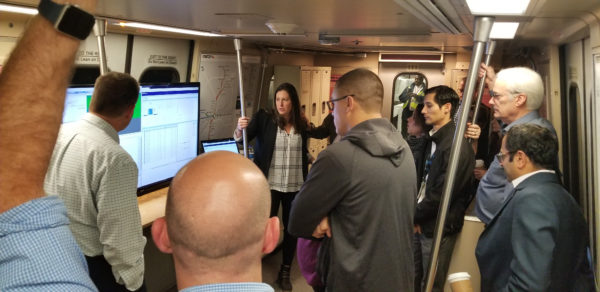
Demonstration of ATIS during Standards Program Working Group Meeting. (TTC Operated by ENSCO)
Future Work at ENSCO’s Transportation Technology Center (TTC) in Pueblo, CO
As we adopt more technology into railway operations, it’s important to ensure optimum interactions between the systems and the people working with them. A good example is that technology is very good at finding defective conditions that are difficult for humans to find. But humans still need to perform the field follow up to exception locations to verify, determine remedial action, and ultimately repair the track. Training is needed to aid track inspectors and maintenance personnel to understand automated track inspection information and properly locate the defects in the track. Identifying track defects doesn’t help if the railway personnel cannot find and fix them. The TTC is expanding its hands-on training to address this very need. The new era of the TTC has the unique ability to have automated inspection technology combined with test tracks with known defects. Students are given real-world scenarios of receiving report from the systems and having to go field verify the exceptions, all done under the supervision of industry experts. The goal of the TTC is to achieve optimum safety and efficiency through the pairing of trained railway personnel and cutting-edge technology.

